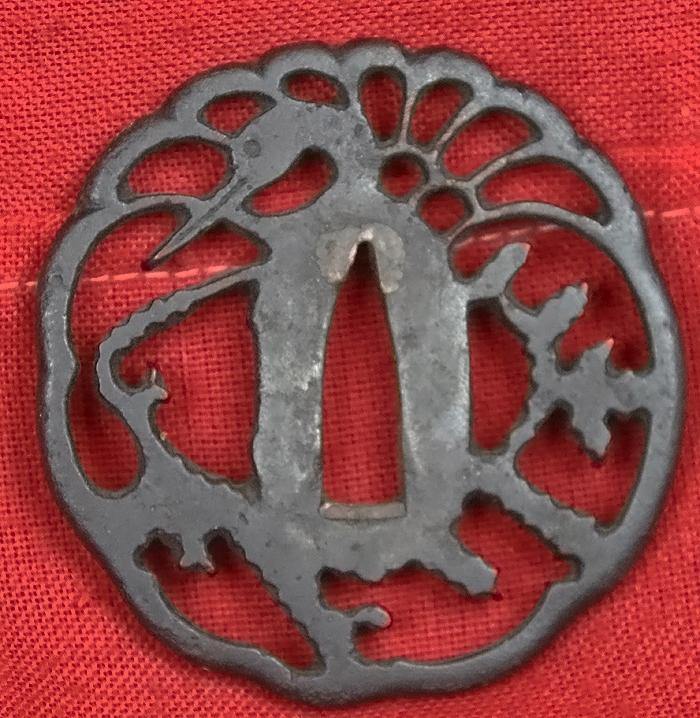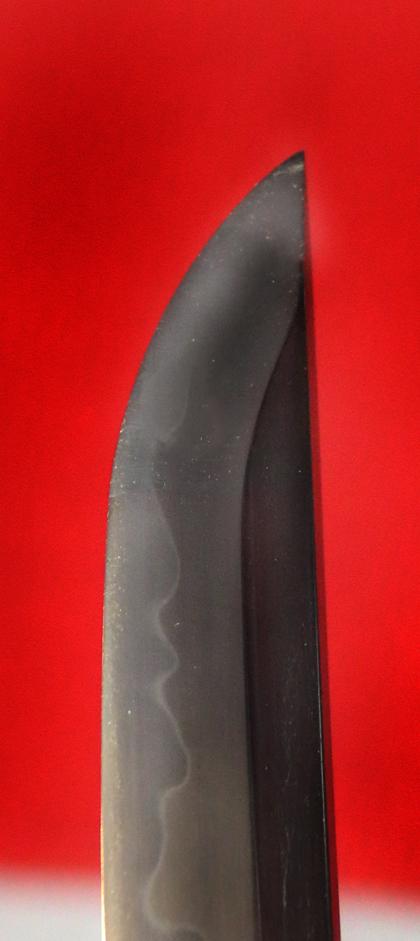A Fine Shinto Samurai Katana Signed By Mino Swordsmith, Nodagoro Fujiwara Kanesada Circa 1720 Around 300 Years Old, With a Horai-zu Style Tsuba
He also signed Kinmichi. see Hawley’s Japanese Swordsmiths, ID KAN533 who was active in the Mino province between 1716-1736. A beautiful sword with a fabulous hamon mounted handachi style. The photos showpresent It is an original Edo period mounted handachi semi tachi form katana with iron mounts of fine quality. The original Edo saya has a beautiful rich red lacquer with flecks of pure gold.
The Edo tsuba is o-sukashi, in iron, a Horai-zu style tsuba that has a motif of crane, the symbol of long life. The crane and/or turtle and/or rocks and/or pine trees and/or bamboo are often referred to as a 蓬莱図 (Hōrai-zu) crane pattern design. The sword was being worn more and more edge up when on foot, but edge down on horseback as it had always been. The handachi is a response to the need to be worn in either style. The samurai were roughly the equivalent of feudal knights. Employed by the shogun or daimyo, they were members of hereditary warrior class that followed a strict "code" that defined their clothes, armour and behaviour on the battlefield. But unlike most medieval knights, samurai warriors could read and they were well versed in Japanese art, literature and poetry. Samurai were expected to be both fierce warriors and lovers of art, a dichotomy summed up by the Japanese concepts of bu to stop the spear exanding into bushido (the way of life of the warrior) and bun (the artistic, intellectual and spiritual side of the samurai).
Originally conceived as away of dignifying raw military power, the two concepts were synthesized in feudal Japan and later became a key feature of Japanese culture and morality.The quintessential samurai was Miyamoto Musashi, a legendary early Edo-period swordsman who reportedly killed 60 men before his 30th birthday and was also a painting master. Members of a hierarchal class or caste, samurai were the sons of samurai and they were taught from an early age to unquestionably obey their mother, father and daimyo. When they grew older they could be trained by Zen Buddhist masters in meditation and the Zen concepts of impermanence and harmony with nature. The were also taught about painting, calligraphy, nature poetry, mythological literature, flower arranging, and the tea ceremony. The blade shows a super hamon, and polish with a couple of very small edge pits near the habaki on just one side.
Code: 23998
8750.00 GBP










